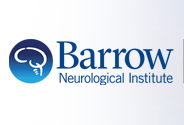Brain Protection for Cerebral Aneurysm Surgery
Department
neurosurgery
Document Type
Article
Abstract
Knowledge about the cellular physiology of cerebral ischemia is expanding rapidly, and we stand at the edge of a new age in which clinicians are able to directly intervene in these processes. Experience from the recent clinical trials using recominant tissue plasminogen activator emphasizes that urgent intervention is necessary. Furthermore, recent studies in animal models of middle cerebral artery occlusion demonstrate that between 40% and 50% of ischemic tissue can potentially be salvaged up to 2 hours after ischemia. Ongoing studies with NMDA receptor antagonists, free radical scavengers, calcium channel blockers, and other innovative therapies should identify which agents are effective in limiting the deleterious effects of the ischemic cascade and rescuing the ischemic penumbra. The neurosurgeon is in the enviable position of being able to benefit from advances in ischemic research, in part, because the neurovascular surgeon can institute protective measures prophylactically before the onset of ischemic insult. Until new and effective therapies become available, the risks of ischemia in the operating room can be reduced by careful attention to normal physiological processes, including blood pressure, oxygenation, and glucose levels as well as the judicious use of barbiturates and hypothermia.
Publication Date
1998
Publication Title
Neurosurgery Clinics of North America
ISSN
1042-3680
Volume
9
Issue
4
First Page
661
Last Page
671
Recommended Citation
Schievink, W. I. and Zabramski, Joseph M., "Brain Protection for Cerebral Aneurysm Surgery" (1998). Neurosurgery. 65.
https://scholar.barrowneuro.org/neurosurgery/65


